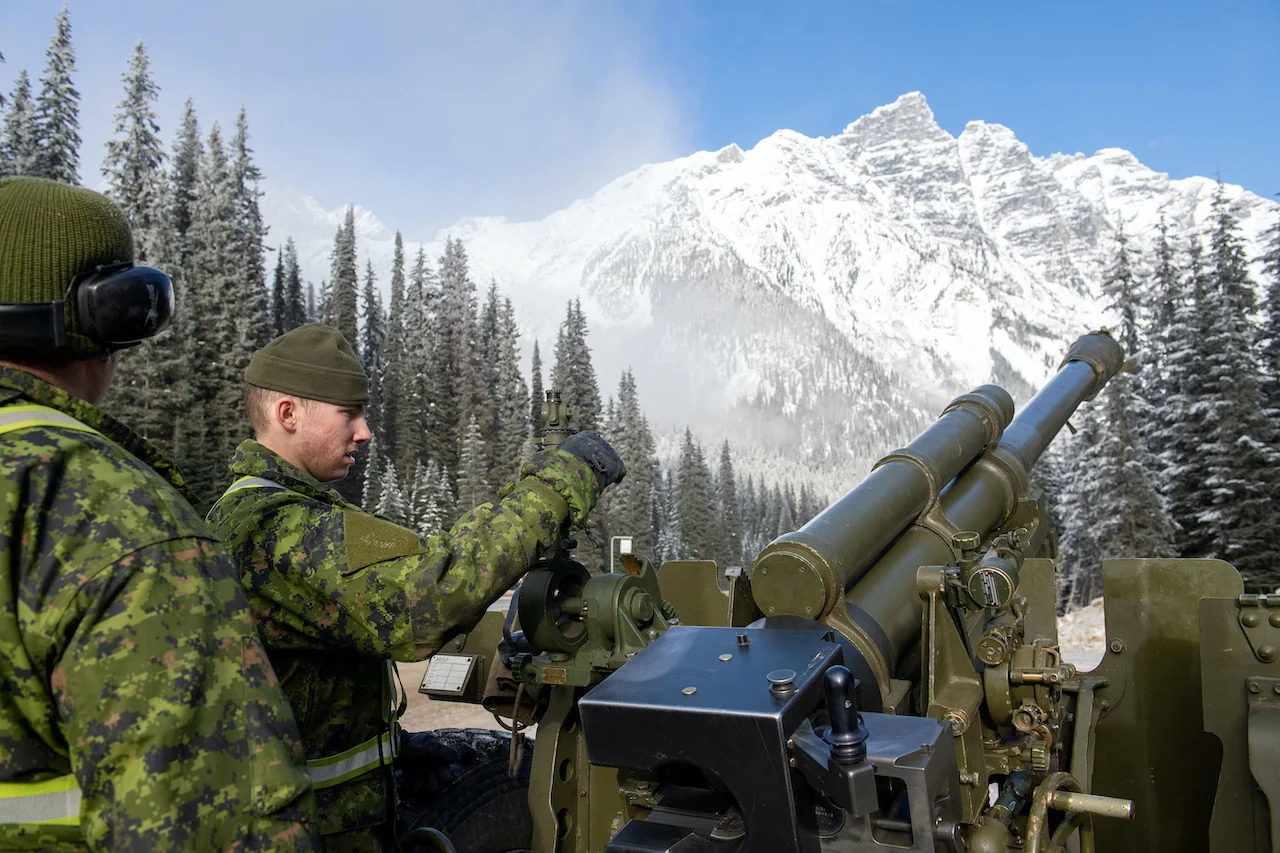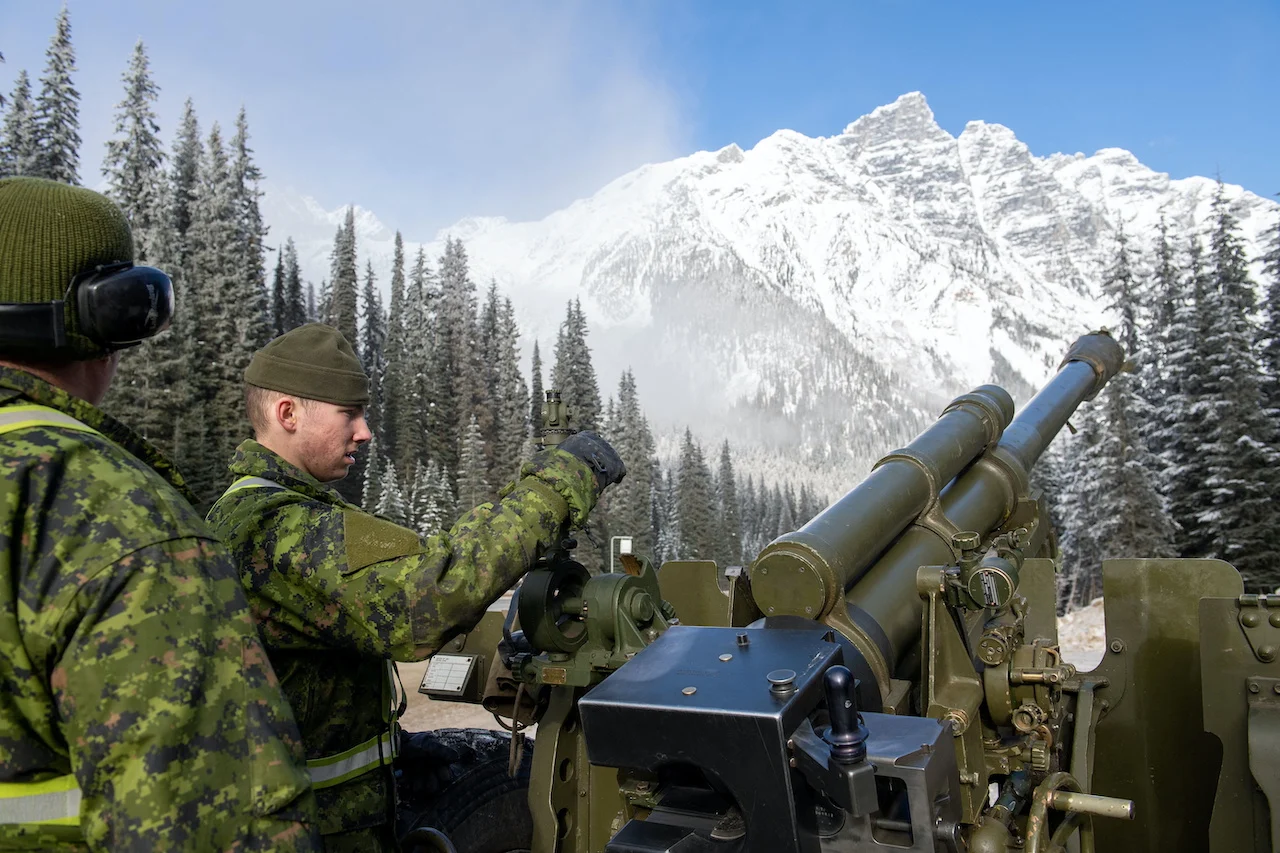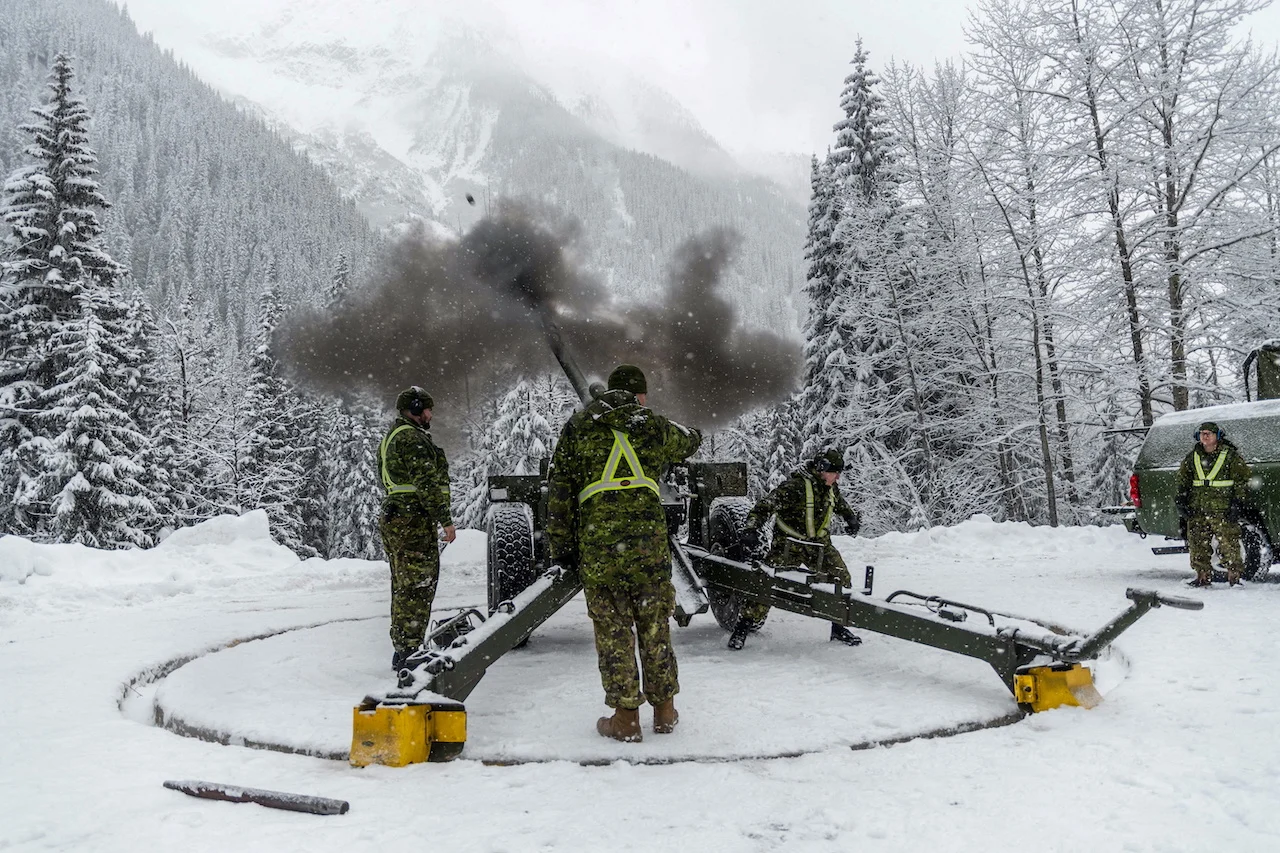
From howitzers to heli-bombs: B.C. fights rising avalanche risk
By Nia Williams
CALGARY, Alberta (Reuters) - British Columbia is rolling out the big guns - literally - to control avalanches that are forcing closures on some major roads for the first time in decades as the Western Canadian province grapples with a snowier-than-usual winter.
B.C. was rocked in 2021 by extreme weather events, including a record-breaking heatwave, wildfires and unprecedented rains that washed out highways and cut off Vancouver, its main city and home to Canada's busiest port, from the rest of the country.
SEE ALSO: Why March is so dangerous when it comes to avalanches
The province, Canada's third-largest by population, uses bombs thrown from helicopters, remote-triggered explosives, and a howitzer gun manned by Canada's military to keep roads safe. But frequent closures for avalanche control are disrupting critical routes to Vancouver.
At the start of this month, B.C.'s alpine snowpack was 15% higher than average, according to the Weather Network channel.
Extreme winter weather, including November's torrential precipitation, a deep freeze in late December and an early January thaw, has created weak layers in the snowpack, making steep mountain slopes more prone to avalanches that can release without warning onto valleys below.
"It's been such a volatile fall and winter season so far, we have had rare 'extreme' avalanche warnings go out for parts of (B.C.'s) south coast in December and the risk is still considerable in the interior," said Tyler Hamilton, a Weather Network meteorologist.

FILE PHOTO: Gunner Levi Stoltzfus from the 10th Field Artillery Regiment, Royal Canadian Artillery applies a bearing on the sight of a 105mm C3 Howitzer gun during Operation Palaci to clear avalanche-prone snow pack at Rogers Pass, British Columbia, Canada November 22, 2019. MCpl PJ Letourneau/Canadian Forces/Handout via REUTERS
Avalanche control missions involve closing sections of highways while teams use explosives to pre-emptively trigger smaller slides, preventing the snowpack from becoming too deep and unstable.
This winter a section of Highway 1 through the Fraser Canyon, 150 km (93 miles) northeast of Vancouver, needed avalanche control for the first time in 25 years, B.C.'s Ministry of Transportation and Infrastructure said.
Along Highway 99 north of Vancouver, avalanche control and risk-reduction activities are three times the seasonal average, with some slide paths producing avalanches big enough to hit the highway for the first time in more than a decade.
Avalanche control in Allison Pass further south on Highway 3, another key route connecting Vancouver to the rest of Canada, has also been above average, the ministry said.
'BALANCING ACT'
All three highways were damaged by the November floods, and a busy avalanche control season is putting further strain on provincial resources. The Coquihalla Highway near Hope only reopened to regular traffic on Wednesday, and provincial authorities said record snow and avalanche risk had delayed repairs to Highway 1 through the Fraser Canyon.
Further east in the province, avalanche teams in Rogers Pass, a rugged 40-km section of Highway 1 running beneath 135 slide paths in Glacier National Park, are dealing with nearly 30% more snowfall than usual and control missions are also above average.
Highway 1 is Canada's main east-west artery and approximately 3,000 vehicles traverse Rogers Pass every day in winter. A major Canadian Pacific rail line runs parallel to the highway.
WATCH: SCIENCE BEHIND: COULD YOUR VOICE TRIGGER START AN AVALANCHE?
Avalanche control missions involve soldiers from the 1st Regiment of the Royal Canadian Horse Artillery, which is stationed in Rogers Pass in winter. They use a howitzer to fire shells packed with 4 kg (8.8 lbs) of explosives in the direction of loaded avalanche paths at 17 different locations along the highway.
"Our goal is to bring down as much snow as we can and bring the hazard down to a point where it's safe to open the highway," said Jim Phillips, acting avalanche operations coordinator for Parks Canada, which runs avalanche control in the national parks.
The Rogers Pass program has been running since the highway opened in 1961. Before that, CP trains crossing the Selkirk Mountains in winter ran a higher risk of deadly snow slides, including one that killed 62 railway workers in 1910.
So far this winter the team has fired 333 howitzer rounds, produced 197 controlled avalanches and closed the highway for 43 hours over seven separate days.
Phillips said his team also uses heli-bombing and remote-trigger systems to set off detonations, and spends C$600,000 ($480,346) a year on explosives alone.

FILE PHOTO: Gunners from the 1st Regiment, Royal Canadian Horse Artillery fire a 105mm C3 Howitzer gun as part of Operation Palaci to clear snow pack in danger of avalanche at Rogers Pass, British Columbia, Canada November 22, 2018. SLt M.X. Dery/Canadian Forces/Handout via REUTERS
"It's a balancing act. You want to keep traffic moving and minimize closures, but also minimize risk to people using the transportation corridor," he added.
And winter weather in Canada is far from over.
Avalanche control is typically needed until late April or early May, depending on the snowpack, and the Weather Network forecasts above average winter storm systems returning to B.C. in February and March.
"We're still in a La Niña situation," said the Weather Network's Hamilton, referring to a weather pattern that tends to result in above-average precipitation and cold temperatures in B.C.
($1 = 1.2491 Canadian dollars)
(Reporting by Nia Williams; Editing by Paul Simao)





